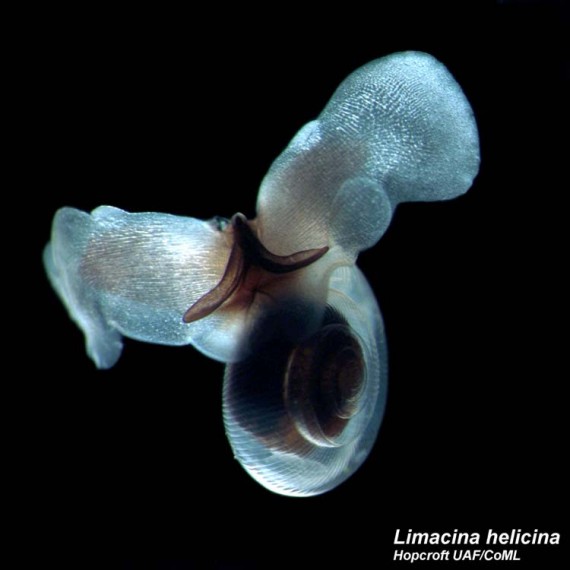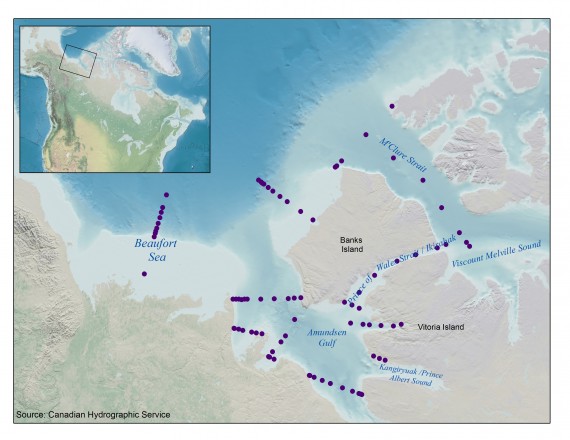Sea snails may offer insights into Arctic Ocean’s acidification
Canadian researchers are also hoping to better understanding fluctuating Arctic Cod populations in the Beaufort Sea.

Canada’s Department of Fisheries and Oceans kicked off another season of research in the western Arctic on Aug. 1, when eight crew members aboard the small research vessel F/V Frosti embarked to gather data for a multi-year project known as the Canadian Beaufort Sea Marine Ecosystem Assessment.
“We study everything from bacteria to bowhead whales,” DFO researcher Andrea Niemi told Nunatsiaq News on Aug. 2.
According to a department spokesperson, this long-term study is helping the government “better understand how changes in ice cover and location, temperature and shifting ocean currents can affect Arctic marine life, habitat and productivity.”
This summer, researchers will include residents from the Inuvialuit communities of Paulatak and Sachs Harbour, as well as scientists from Laval university.
That’s after the study got started up again last year, in consultation with the Northwest Territories communities of Tuktoyaktuk and Ulukhaktok, after a two-year break. The study first ran from 2012 until 2014.
The B.C.-based research vessel tasked with the research is set up with trawl nets to gather samples from the bottom of the Beaufort Sea.
Data for species important to the northern economy like turbot and shrimp will be gathered, but there are two other species being looked at this year that don’t usually see the limelight, Niemi said.
Those are Arctic cod and small snail-like zooplankton called pteropods.

The DFO has seen an ebb and flow in Arctic cod populations in and around the Beaufort, but why the numbers change from year to year in the region isn’t known, Niemi said.
The study, which is ecosystem focused, will look to see how stable the species is.
“It’s very important in the food web for the seals and the whales,” she said.
As for the pteropods, they’re being treated a little like a canary in a coalmine.
“They call them sea snails — they’re very small but they have a shell on them,” Niemi said.
In other oceans, rising pH levels are damaging those tiny shells.
“It’s an indicator species, to indicate whether there is a problem with ocean acidification or not,” Niemi said.
Research shows the Arctic is susceptible to changes in its pH, but, “we don’t know what the impacts are of ocean acidification in the Arctic Ocean,” she said.
This year, there’s also more ice sticking around in waterways around the Beaufort than in previous years, so scientists will look for species spikes near the edges of ice floes, which can be “hot spots” for sea life, Niemi said.
Before the study started there was little connected data for ecosystems in the Beaufort, so it’s still too soon to tell if there are trends in the ocean’s cycle of life. But researchers will work with communities this summer to see what role coastal bays play in the issue of fluctuating populations that researchers have seen so far in the region.
“The bays are really important for life stages,” Niemi said.